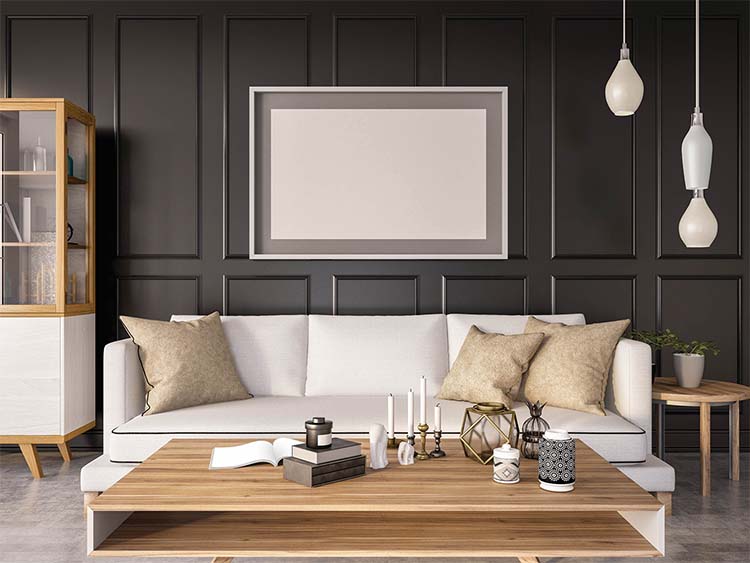An accent wall is a simple yet powerful way to add character, depth, and visual interest to any room. Using paint creatively can transform a space without requiring a complete overhaul. Here’s how to use paint effectively to create stunning accent walls in your home or office:

Choose the Right Wall
The first step in creating an accent wall is selecting the right one. Typically, this is the wall that naturally draws attention when you enter the room. For example:
- Living Room: The wall behind the sofa or the one with the fireplace.
- Bedroom: The wall behind the headboard.
- Office: A wall visible during virtual meetings or behind your desk setup.
Avoid choosing walls with too many windows or doors, as they can break up the design and dilute the effect of the accent wall.
Pick the Perfect Paint Color
The color you choose for your accent wall will set the tone for the entire space. Paint offers endless possibilities for creativity. Here are some tips:
- Bold Colors: Bright shades like deep blue, emerald green, or fiery red can make a dramatic statement.
- Neutral Tones: Soft grays, taupes, or pastels offer a more subdued yet impactful effect.
- Complementary Colors: Ensure the accent wall complements the surrounding walls and the overall color scheme of the room.
Test your chosen color with paint samples to see how it looks in different lighting conditions throughout the day. Paint swatches are your best friend when narrowing down options.
Use Paint to Create Patterns and Textures
Solid colors are a classic choice, but paint can also be used to add patterns or textures to your accent wall:
- Stripes: Horizontal or vertical stripes can elongate or widen a room.
- Geometric Designs: Triangles, diamonds, or other shapes create a modern and eye-catching effect.
- Ombre: A gradient effect transitioning from one color to another adds depth and interest.
- Stenciling: Use stencils to create intricate designs or repeating patterns for a professional look.
Paint allows for unlimited customization, making your accent wall truly unique.
Highlight Your Painted Wall with Accessories
Once your painted accent wall is complete, enhance its impact with complementary decor:
- Art: Hang large artwork or a gallery wall to emphasize the color and design.
- Lighting: Use sconces, pendant lights, or LED strips to highlight the painted details.
- Furniture Placement: Arrange furniture to naturally draw the eye toward the painted wall.
The right accessories can elevate your painted accent wall and make it the focal point of the room.
Balance Your Design
The key to a successful painted accent wall is balance. Avoid adding too many competing elements in the room that might distract from the wall. Keep the rest of the space cohesive and uncluttered to let the paint shine.
Why Choose Paint for Accent Walls?
Using paint for an accent wall is a budget-friendly way to:
- Make small rooms feel larger by adding depth and dimension.
- Define different zones in open-concept spaces with creative designs.
- Reflect your personality and style with custom patterns or bold colors.
Paint is versatile, cost-effective, and easy to update if you’re ready for a change.
Final Thoughts
Whether you’re refreshing a single room or revamping your entire home, using paint to create an accent wall is a versatile design tool that can make a big impact. With the right choices in color, technique, and decor, you can create a space that feels uniquely yours. If you’re unsure where to start, consulting with a professional painter can help bring your vision to life seamlessly.
Ready to transform your space with the power of paint? Contact us at Paint Unlimited LLC for expert advice and top-notch painting services!
